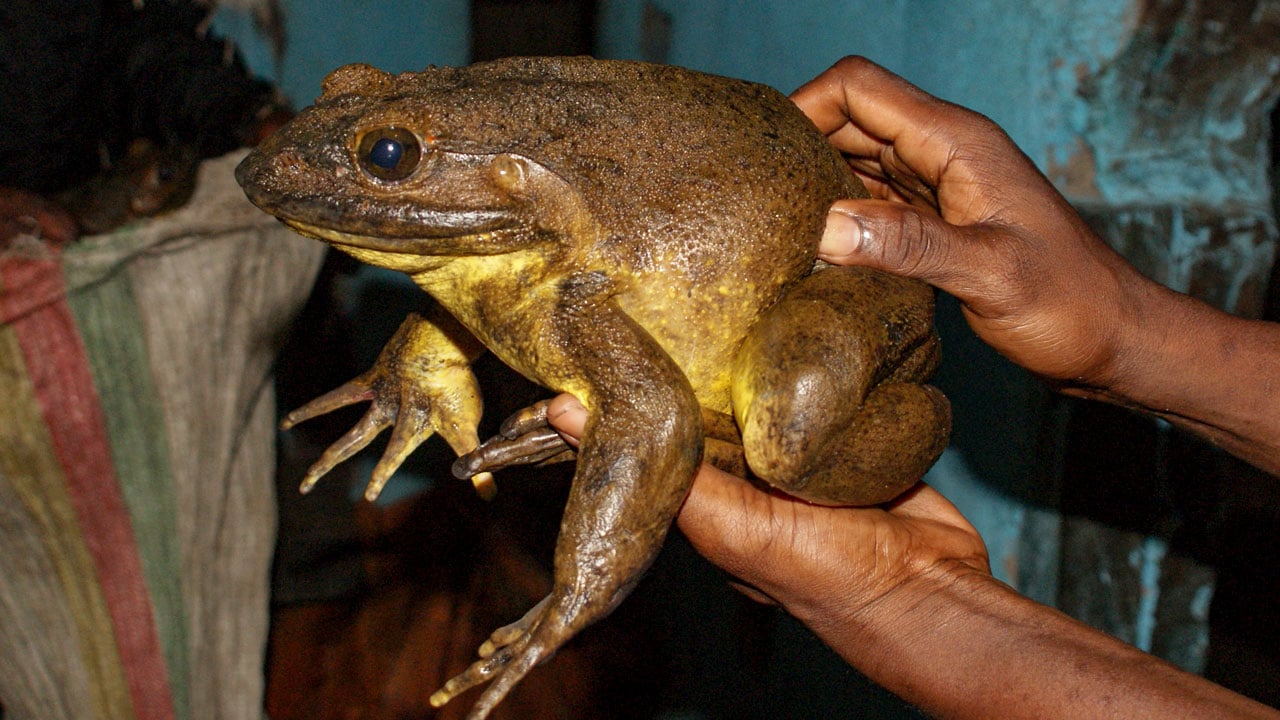Goliath frogs are found in Cameroon and they are among the world’s largest frogs, measuring up to 34 centimeters and weighing up to 3.3 kilograms. Despite their size, their reproductive behavior has remained a mystery until now. Scientists believe they have uncovered how these massive frogs care for their young: by creating special swimming pools for them.

While most frogs lay their eggs on various surfaces like leaves or twigs, researchers studying Goliath frogs along the Mpoula River in western Cameroon made an intriguing discovery. They found cleared dips in the shore rocks, free of leaves and debris. Further exploration revealed more cleared pools above the waterline.
These pools, it turns out, were Goliath frog nests. The researchers identified 22 potential nests, with 14 containing thousands of eggs each. Some nests also held tadpoles of different ages, suggesting that the frogs reuse the pools. During overnight observations using infrared time-lapse cameras, researchers witnessed adult frogs guarding the nests until dawn, protecting their young from potential predators.
The excavation of these nests is primarily carried out by the larger male Goliath frogs. These frogs move sand and stones, sometimes up to two-thirds of their own body weight, to create meter-wide ponds. Some even use the excavated materials to construct walls around the pools. This significant effort in construction, coupled with parental guarding, showcases an unusually high level of parental care among frogs.
This behavior sheds light on how Goliath frogs have evolved to their impressive size. The larger frogs can undertake more substantial construction efforts, providing better protection for their vulnerable tadpoles. The presence of these carefully constructed nests may explain how Goliath frogs have thrived and grown to their gigantic proportions. The discovery of these nesting behaviors among Goliath frogs reveals a fascinating aspect of their reproductive strategy and highlights the remarkable parental care exhibited by these amphibians.
Leave a Reply